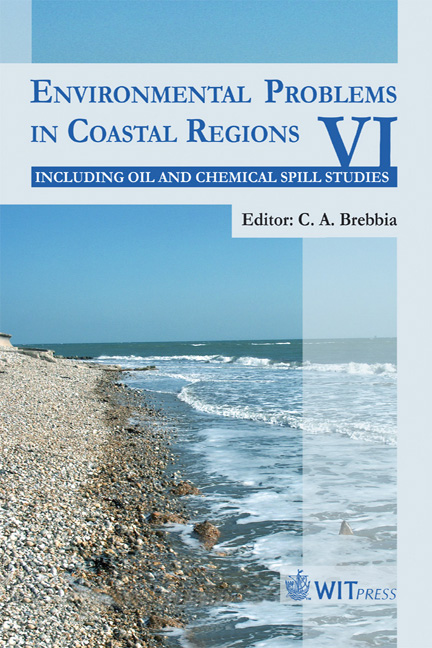Simulation Of Oil Spill Behaviour And Response Operations In PISCES
Price
Free (open access)
Transaction
Volume
88
Pages
14
Published
2006
Size
636 kb
Paper DOI
10.2495/CENV060271
Copyright
WIT Press
Author(s)
L. Delgado, E. Kumzerova & M. Martynov
Abstract
The aim of this paper is to present a novel method of numerical simulation of oil spill behaviour in the conditions of human response. The main point of the method is to extend the Lagrangian approach by introducing interactions between oil particles. This innovation allows some essential disadvantages of the traditional Lagrangian method to be compensated, in particular the impossibility of describing oil interaction with different kinds of natural and artificial barriers like coastlines and booms. The tuning of the interparticle interaction was made via multi-stage parametric optimization with the aid of the alternating-variable descent technique, and includes the verification with known semi-empirical solutions as well as with different logical tests. The model takes into account the main physicochemical processes occurring in the oil slick, which include evaporation, dispersion, emulsification and viscosity variation. Simulation is carried out with regard to the following environment factors: coastline, field of currents, weather, sea state, ice conditions and environmentally sensitive areas. In addition, models of response resource application including booming and recovery have been developed. The presented technique is used as model part of the PISCES (Potential Incident Simulation Control and Evaluation System) oil spill simulator produced by TRANSAS and designed for planning spill recovery after accidental marine oil spills. Keywords: oil spill simulation, oil spreading model, response strategies. 1 Introduction Numerical simulation of oil pollution fate is an important tool for the planning of spill recovery strategies. At the same time forecasting in actual situations taking
Keywords
oil spill simulation, oil spreading model, response strategies.





